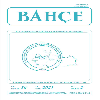BAZI ÜZÜMSÜ MEYVELERDE TOPLAM FENOL VE ANTİOKSİDAN AKTİVİTE İÇERİKLERİNİN BELİRLENMESİ
DETERMINATION OF TOTAL PHENOL AND ANTIOXIDANT ACTIVITY OF SOME BERRIES
___
- 1. Ancillotti, C., L. Ciofi, D. Pucci, E. Sagona, E. Giordani, S. Biricolti, U. Chiuminatto, 2016. Polyphenolic Profiles and Antioxidant and Antiradical Activity of Italian Berries from Vaccinium myrtillus L. and Vaccinium uliginosum L. subsp. Gaultherioides (Bigelow) SB Young. Food chemistry 204:176–184.
- 2. Aramwit, P., N. Bang, T.Srichana, 2010. The Properties and Stability of Anthocyanins in Mulberry Fruits. Food Research International 43(4):1093–1097.
- 3. Arena, E., B. Fallıco and E. Maccarone, 2001. Evaluation of Antioxidant Capacity of Blood Orange Juices as Influenced By Constituents, Concentration Process and Storage. Food Chemistry 74:423–427.
- 4. Bermúdez–Soto, M. J. and F. A. Tomás– Barberán, 2004. Evaluation of Commercial Red Fruit Juice Concentrates As Ingredients For Antioxidant Functional Juices. European Food Research and Technology 219:133–141.
- 5. Bitsch, R., M. Netzel, E. Carle, G. Strass, B. Kesenheımer, M. Herbst and I. Bitsch, 2001. Bioavailability of Antioxidative Compounds from Brettacher Apple Juice in Humans. Innovative Food Science and Emerging Technologies 1:245–249.
- 6. Çelik, H., 2008. Yaban Mersini (Likapa) Yetiştiriciliği. Artvin’de Yaban Mersini (Likapa) Yetiştiriciliği Eğitimi Projesi. AÇÜ Orman Fakültesi Dekanlığı Ders Notu, DOKAP LDI–172, Artvin, 103 s.
- 7. Davalos, A., M. Miguel, B. Bartolome and R. Lopez–Fandino, 2004. Antioxidantb Activity Of Peptides Derived From Egg White Roteins By Enzymatic Hydrolysis. Food Protectection 67:1939–1944.
- 8. Del Caro, A., A. Pıga, V. Vacca and M. Agabbio, 2004. Changes of Flavonoids, Vitamin C and Antioxidant Capacity in Minimally Processed Citrus Segments and Juices during Storage. Food Chemistry 84:99– 105.
- 9. Elmacı, Y. and A. Tomris, 2002. Flavour Evaluation of Three Black Mulberry (Morus nigra) Cultivars Using GC/MS, Chemical and Sensory Data. Journal of the Science of Food and Agriculture 82(6):632–635.
- 10.Garcia–Alonso, M., S. De Pascual–Teresa, C.Santos–Buegla and J. C. Rivas–Gonzalo, 2004. Evaluation of the Antioxidant Properties of Fruits. Food Chemistry 84:13–18.
- 11.Gougoulias, N., 2014. Comparatıve Studies on Polyphenols Profile and Antioxidative Activity of Some Berry Fruits. Oxidation Communications 37(3):713–721.
- 12.Halvorsen, B. L., K. Holte, M. C. W. Myhrstad, I. Barikmo, E. Hvatttum, S. F. Remberg, A. B. Wold, Haffner, H. Baugerod, L. F. Andersen, J. Moskaug, D. R. Jacobs and R. Blomhoff, 2001. Systematic Screening of Total Antioxidants in Dietary Plants. American Society for Nutritional Sciences 461–471.
- 13.Kähkönen, M. P., A. I. Hopia, H. J. Vuorela, J. P. Rauha, K. Pihlaja, T. S. Kujala and M. Heinonen, 1999. Antioxidant Activity of Plant Extracts Containing Phenolic Compounds. Journal of Agriculture Food Chemistry (47):3954–3962.
- 14.Karadeniz, F., H. S. Burdurlu, N. Koca and Y. Soyer, 2005. Antioxidant Activity of Selected Fruits and Vegetables Grown In Turkey. Turkish Journal of Agriculture and Forestry 29(4):297–303.
- 15.Koca, N. ve F. Karadeniz, 2003. Serbest Radikal Oluşum Mekanizmaları ve Vücuttaki Antioksidan Savunma Sistemleri. Gıda Mühendisliği Dergisi 6:32–37.
- 16.Leong, L. P. and G. Shui, 2002. An Investigation of Antioxidant Capacity of Fruits in Singapore Markets. Food Chemistry 76(1):69–75.
- 17.Lugasi, A., L. Biro and J. Hovarie, 2003. Lycopene Content of Foods and Lycopene Intake in Two Groups of the Hungarian Population. Nutrition Research 23(8):1035– 1044.
- 18.Miller, N. J., A. T. Diplock and C. A. Riceevans, 1995. Evaluation of the Total Antioxidant Activity as a Marker of the Deterioration of Apple Juice Oil Storage. Agricultural and Food Chemistry 43(7):1794– 1801.
- 19.Netzel, M., G. Strass, C. Kaul, I. Bitsch, H. Dietrich and R. Ve Bitsch, 2002. In vivo Antioxidant Capacity of a Composite Berry Juice. Food Research International 35:213– 216.
- 20.Özden, M. ve A. N. Özden, 2014. Farklı Renkteki Meyvelerin Toplam Antosiyanin, Toplam Fenolik Kapsamlarıyla Toplam Antioksidan Kapasitelerinin Karşılaştırılması. Electronic Journal of Food Technologies 9(2):1–12.
- 21.Pehluvan, M. ve M. Güleryüz, 2000. Bazı Ahududu Çeşitlerinin Oltu İlçesine Adaptasyonu Üzerinde Bir Araştırma (Yayınlanmamış Yüksek Lisans Tezi). Atatürk Üniversitesi Fen Bilimleri Enstitüsü, Erzurum. 74 s.
- 22.Prior, R. L., G. Cao, A. Martin, E. Sofic, J. McEwen, C. O’Brien, N. Lischner, M. Ehlenfeldt, W. Kalt, G. Krewer, C. M. Mainland, 1998. Antioxidant Capacity as Influenced by Total Phenolics and Anthocyanin Content, Maturity and Variety of Vaccinium species. Journal of Agriculture Food Chemistry 46:2686–2693.
- 23.Rossi, A., 2000. Phytochemical–Vitamins of the Future. Family and Consumer Sciences. Ohio State University Extension Fact Sheet, 1787 Neil Avenue, Columbus, Ohio 43210. (http://ohioline.osu.edu/hygfact/5000/5050.ht ml).
- 24.Sousa, W. R., C. Da Rocha and C. L. Cardoso, 2004. Determination of the Relative Contribution of Phenolic Antioxidants in Orange Juice by Volta metric Methods. Food Composition and Analysis 17(5):619–633.
- 25.Subramani, S., C. Akoh and G. Krewer, 2002. Phenolic Compounds and Antioxidant Capacity of Georgia–Grown Blueberries and Blackberries. Journal of Agricultural and Food Chemistry 50(8):2432–2438.
- 26.Wang, L. J., S. Su, J. Wu, H. Du, S. S. Li, J. W. Huo and L. S. Wang, 2014. Variation of Anthocyanins and Flavonols in Vaccinium uliginosum Berry in Lesser Khingan Mountains and Its Antioxidant Activity. Food Chemistry 160:357–364.
- ISSN: 1300-8943
- Yayın Aralığı: Yılda 2 Sayı
- Başlangıç: 1968
- Yayıncı: Atatürk Bahçe Kültürleri Merkez Araştırma Enstitüsü
ÜZÜMSÜ MEYVELERİN KAHRAMANMARAŞ’TA DONDURMA SANAYİSİ AÇISINDAN ÖNEMİ
Serkan ARAS, Nesibe Ebru KAFKAS, Muhammet Ali GÜNDEŞLİ
DOĞU KARADENİZ BÖLGESİ’NDE ÜZÜMSÜ MEYVELERİN POTANSİYELİ VE GELECEĞİ
Keziban YAZICI, Nalan BAKOĞLU, Mustafa AKBULUT, Burcu GÖKSU³
ORGANİK ÇİLEK ÜRETİMİNDE EKİM NÖBETİ UYGULAMALARININ BİTKİ GELİŞİMİ ÜZERİNE ETKİLERİ
PEYZAJ TASARIMINDA ALTERNATİF BİR MEYVE AĞACI: Arbutus unedo L.
Elif BOZDOĞAN, Sema GÜLER, Ayşegül BURĞUT
Nurgül TÜREMİŞ, Ayşegül BURĞUT, Edanur KORKUT, Şebnem BÜYÜKYEL, Mukadder CÖMERTPAY
Nafiye ADAK, Kamile ULUKAPI, Ayşegül NASIRCILAR
Halil İbrahim OĞUZ, Ebru KAFKAS, Bülent ZORLUGENDz, Feyza KIROĞLU ZORLUGENÇ
BAZI ÜZÜMSÜ MEYVELERDE TOPLAM FENOL VE ANTİOKSİDAN AKTİVİTE İÇERİKLERİNİN BELİRLENMESİ
Ayşegül BURGUT², Hatice ÖZCAN², Özgecan TÜREMİŞ³, Begüm OLUT, Nurgül F TÜREMİŞ, Ebru KAFKAS
